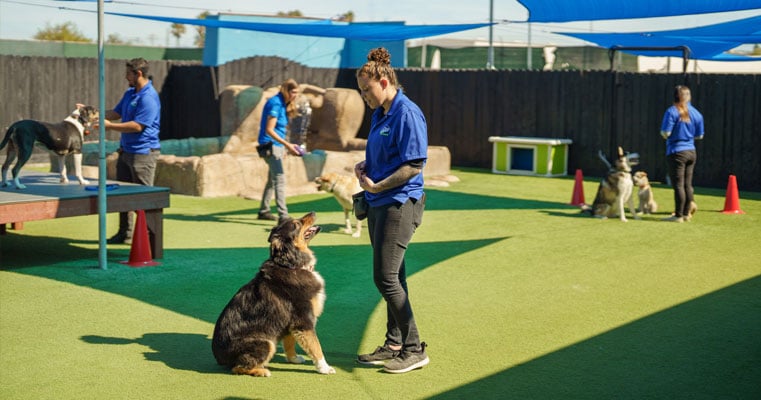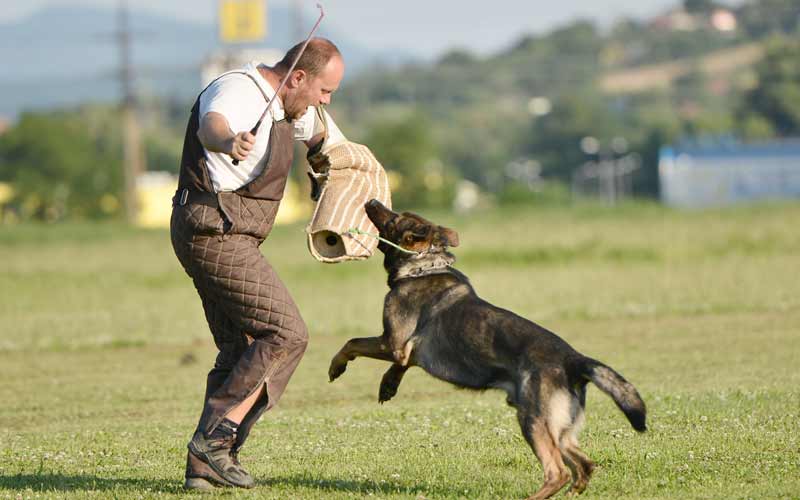The Ultimate Overview to Positive Reinforcement in Dog Training
Vital Tips for Effective Dog Training: A Guide for Animal Owners
Efficient dog training is a multifaceted procedure that requires a tactical approach customized to both the pet dog's character and the owner's objectives. Understanding how to navigate these obstacles can significantly boost the training experience, eventually transforming the connection between owner and dog.
Comprehending Dog Habits
Understanding pet habits is essential for effective training and promoting a harmonious relationship in between dogs and their owners. Canines interact mostly via body movement, articulations, and activities, making it crucial for proprietors to analyze these signals properly. Acknowledging a pet dog's posture, tail placement, and ear orientation can provide insights into its mood. For example, a wagging tail does not always suggest joy; it can likewise indicate enjoyment or anxiousness.

Socialization plays a substantial duty in dog habits; exposure to different settings, people, and various other pets can substantially impact a dog's personality. Elements such as breed qualities and specific personality ought to lead training methods, as some types might have certain behavior traits that require tailored approaches. By comprehending these aspects, owners can develop a helpful environment that urges favorable habits, causing effective training results and a much deeper bond with their pet dogs.
Establishing Constant Commands
Effective interaction with your canine starts with developing constant commands. This fundamental aspect of training is vital for promoting understanding between you and your pet dog. Consistency in the commands you utilize makes sure that your pet can accurately connect certain words or expressions with the desired habits.
When picking commands, choose clear, distinct words that are very easy to separate and claim from each other. Stay clear of using similar-sounding commands that might puzzle your pet dog. For instance, using "rest" and "remain" is appropriate, yet "sit" and "struck" can lead to misunderstandings.
Additionally, maintain the exact same tone and quantity for each command. Dogs are sensitive to singing hints, so varying your tone can produce confusion.
It is equally vital to ensure that all family members are on the exact same web page concerning the commands used. A united front in command use will protect against mixed signals and reinforce the knowing procedure.
Favorable Support Techniques
The power of positive reinforcement in canine training depends on its capacity to encourage wanted behaviors through rewards and praise. This technique is based in the principle that actions complied with by desirable end results are more probable to be duplicated. By integrating favorable support into your training routine, you can effectively form your pet's behavior in a constructive way.
To carry out favorable reinforcement, it's necessary to recognize what motivates your dog, whether it be treats, playthings, or verbal appreciation. When your pet dog executes a desired activity, such as resting on command, instantly compensate them with a reward or affection. This association in between the command and the favorable result reinforces their understanding.
It's important to timing the benefits appropriately; providing the support within secs of the preferred habits assists your canine make the link (dog training). Furthermore, uniformity is essential-- make sure that all household members make use of the exact same commands and incentive systems to prevent confusion

Slowly, you can decrease the frequency of deals with as your pet dog discovers the behavior, transitioning to commend or intermittent incentives. This approach not only promotes a strong bond in between you and your pet yet likewise advertises a positive learning atmosphere, making training an enjoyable experience for both.
Socialization and Interaction
Constantly subjecting your pet dog to a variety of atmospheres, individuals, and various other animals is vital for their social development. Socializing ought to start early, ideally throughout the my blog important home window of 3 to 14 weeks, when puppies are most responsive to new experiences. Nevertheless, older dogs can likewise gain from continuous socialization initiatives.
Introduce your dog to various settings, such as parks, pet-friendly shops, and city locations. This direct exposure assists them adapt to various stimulations, decreasing anxiety and fear responses. Encourage favorable communications with various other pet dogs and people, making sure that these experiences are secure and regulated to cultivate confidence.
Make use of structured playdates with well-mannered pets, as this can improve your dog's social abilities and educate them proper behavior. Obedience courses and training sessions likewise offer excellent possibilities for socialization, allowing your pet to engage with others in a supervised environment.
Display your pet dog's body movement during communications, as this will assist you gauge their comfort degree. Slowly increase direct exposure to more challenging scenarios while making certain that each experience declares. A well-socialized canine is most likely to show balanced habits, making them a joy to have in any type of setup.
Dealing With Usual Training Challenges
Every pet owner will certainly experience training obstacles at some time, no matter of their pet's age or socialization level. Identifying typical issues such as stubbornness, distractions, and terror can assist in establishing efficient techniques for enhancement.

Distractions during training sessions can hinder emphasis. To battle this, begin training in a silent setting with marginal stimulations. Progressively present distractions as the dog becomes more competent in commands. Short, regular training sessions are also efficient in preserving attention.
Terror can impede a canine's discovering process. Gradual desensitization to the resource of fear, paired with favorable reinforcement, can help ease stress and anxiety. Perseverance is important; never force a pet dog into a situation that causes distress, as this might worsen the issue.
Inevitably, understanding and attending to these common obstacles with an organized method will promote a more effective training experience, enhancing the bond between dog and proprietor while promoting efficient knowing.
Conclusion
In summary, effective dog training counts on a detailed understanding of canine behavior, the establishment of consistent commands, and the application of favorable reinforcement strategies. Socialization plays a critical function in creating well-adjusted family pets, while addressing usual training difficulties calls for perseverance and versatility. By applying these vital techniques, family pet owners can cultivate a strong bond with their pet dogs and advertise desirable habits, inevitably bring about a harmonious partnership in between humans and their canine buddies.
Recognizing dog actions is try this necessary for reliable training and fostering a harmonious connection in between pooches and their owners.Socializing plays a substantial role in canine habits; direct exposure to various settings, individuals, and various other animals can substantially influence a pet's personality.The power of positive reinforcement in canine training exists in its capacity to urge wanted habits via incentives and appreciation. By including favorable support right into your training program, you can successfully shape your canine's habits in a useful fashion.
In summary, successful dog training relies on a comprehensive understanding of canine behavior, the establishment of regular commands, and the application of favorable support strategies.